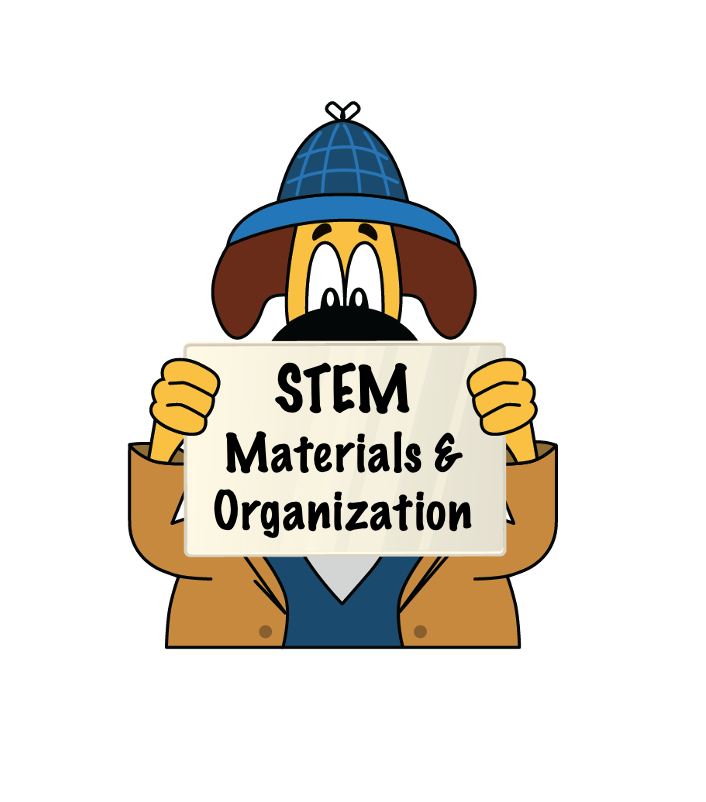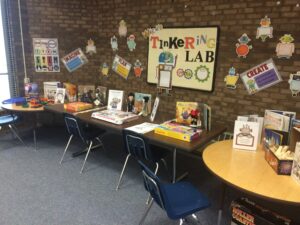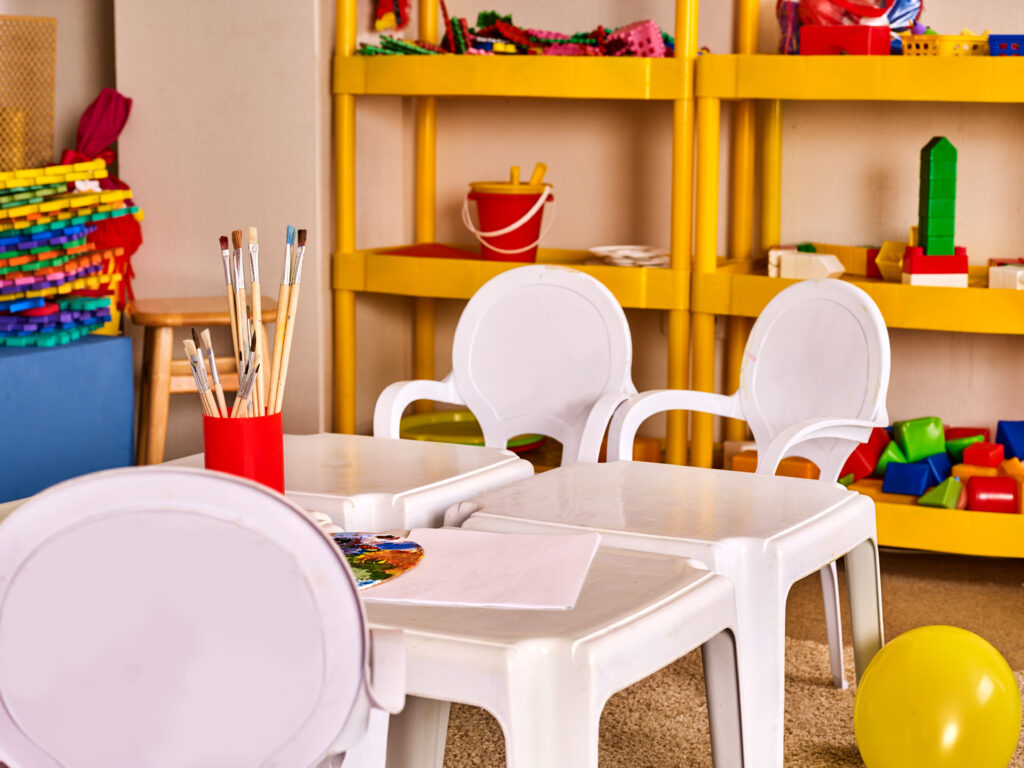
Materials and Organization
Planning your STEM classroom can seem a little overwhelming since there are so many considerations:
- How can the space be arranged so that teams of students have room to work?
- Where do unfinished projects go?
- How and where are all of the materials stored?
- Where do I get STEM materials?

Laying Out the Space
The first step in organizing your STEM classroom is deciding where your students can physically do the challenges. Most of us aren’t teaching in a large lab with endless space so typically there is no such things as "extra space".
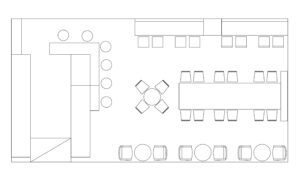
We believe the key to finding room for STEM in your classroom is to plan your entire classroom organization around STEM – even if you aren’t a STEM specialist. Our students were typically arranged in table groups of four – the usual group size for about anything we did for any subject. We found this worked well for STEM since the combined four desk tops offer ample room for projects and it’s a good arrangement for group discussions
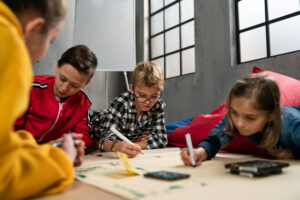
Often the groups would gravitate to working on the floor especially if they were designing wind cars, catapults or anything with any kind of movement. So, try to have some open floor space. Look to your classroom library to provide this space.
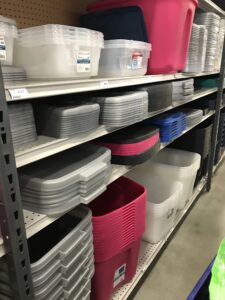
When thinking about space you need to plan where unfinished projects will go. Plastic trays are perfect to contain projects and give students a moveable workspace that could be stored on the top of books shelves when work time was over for the day. The tops of classroom library shelves can serve as a place for trays of incomplete projects. Consider using one book shelf for bins containing the materials the students could use.
STEM Materials
Where to Get Them
The best thing about getting materials for your STEM program is that most of the materials are items that are already found in school – pipe cleaners, craft sticks, tape, rubber bands, paper clips and brad fasteners. Much of the rest are easily collected and brought in from home – cardboard, toilet paper and paper towel rolls, tooth picks and rinsed out recyclables like yogurt containers.
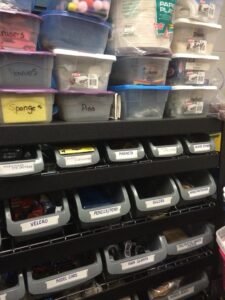
Here are some of our favorite ways to get materials:
- School budget – Schools typically have contracts with vendors to purchase materials at a reduced cost. Talk to your principal during the summer and see if the school can cover the cost of just a few of the materials like masking tape which is pricey. They also could order card stock and construction paper.
- PTA – PTAs assemble their budget during the summer so be sure to ask then. They can add STEM materials as a line item. If your school doesn’t have a STEM specialist, then your fellow teachers will also be looking for materials.
- Parents – consider sending a donation request letter to your parents. This link will take you to a free template you can download and use to ask for donations.
- Grants - There are many associations and organizations that are willing to fund STEM education and projects through a grant program. Most of the applications are pretty simple and we found it was relatively easy to get $200 here and there from different organizations. We regularly post grant ideas on our Facebook and Instagram pages.
- Local Stores - Many stores are willing to donate at least some items. We received many paint stirs from our local paint store for several projects. A lot of big box stores have budgets for donations either in the form of actual supplies or gift cards.
- Corporations - Do you have any corporations near you? In Northern Virginia there are a lot of Tech contractors. Companies such as Northrop Grumman and Lockhead Martin have STEM Outreach programs and will send not only lessons and materials but often a volunteer to help you do a project.
- Local Engineering and Science Associations- Check to see if any associations are located near you. They frequently donate materials or funds to classrooms.
- Friends, family neighbors – they may possibly work for a company that is willing to donate surplus items you can use.
Survival Tips
We won’t sugar coat it – keeping up with a STEM program in your classroom takes a lot of planning and ongoing organization. Through trial and error – and many hours cleaning a messy room, here are our best tips:
- Procedures, procedures, procedures – teach and practice these procedures at the beginning of the school year. Make sure your students know how to access materials, put them away and what to do with unfinished projects. Have these procedures posted in your classroom.
- Make keeping the STEM materials organized a regular student job.
- Be very specific when asking for donations of supplies. You don’t want to be the recipient of your families’ “treasures” after cleaning out their closet. We’ve included a list of common supplies you may want to ask for in this freebie packet.
- Specify clean materials only. You don't have time to clean off bits of food, dirt or tissue from donations.
- Be ready with storage and, if using bins, have them already labeled.
- Know what you will do with any overflow and extra materials.
Our classrooms weren’t always as neat as a pin since budding engineers’ projects take up space and aren’t usually completed in a day. But we are confident if you follow our advice above, STEM in your classroom will at least be controlled chaos, if not actually super organized.
Wendy And Cheryl



